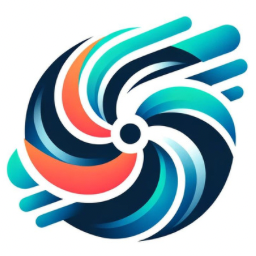Are you part of a remote team searching for the best collaboration tools? Look no further! In this article, we have compiled a list of the top 10 collaboration tools that will help you and your team work seamlessly, no matter where you are located. From project management to communication tools, these platforms will enhance productivity, streamline communication, and ensure smooth collaboration among team members. Get ready to discover the ultimate tools that will revolutionize the way your remote team works together!
Overview of Collaboration Tools
In today’s increasingly remote work environment, collaboration tools have become an essential part of maintaining effective communication and productivity among team members. These tools provide remote teams with the ability to connect, collaborate, and coordinate their efforts seamlessly, regardless of their physical location. From video communication platforms to project management software, there are numerous collaboration tools available that cater to the diverse needs of remote teams.
The Importance of Good Collaboration Tools
Good collaboration tools are crucial for remote teams as they bridge the gap created by physical separation. With the right collaboration tools in place, teams can foster effective communication, streamline workflows, and enhance productivity. By providing a centralized platform for communication, file sharing, task management, and project tracking, these tools eliminate the challenges associated with remote work, such as miscommunication, lack of coordination, and difficulty in tracking progress. The ability to collaborate effectively in a remote setting greatly contributes to the success of projects and the overall satisfaction and motivation of team members.
Key Features to Look for in Collaboration Tools
When selecting collaboration tools for remote teams, it is important to consider certain key features. These features are essential in ensuring seamless communication and effective collaboration. Some of the key features to look for in collaboration tools include:
Real-time Communication: The tool should provide robust and reliable real-time communication capabilities, such as video conferencing, instant messaging, and audio calls.
File Sharing and Document Management: A good collaboration tool should facilitate easy sharing of files, documents, and other resources among team members, with version control and access permissions.
Task and Project Management: The tool should offer effective task and project management features, including task assignment, progress tracking, deadlines, and notifications.
Integration Capabilities: Collaboration tools that seamlessly integrate with other commonly used tools, such as project management software, calendar apps, and email platforms, allow for a more streamlined and efficient workflow.
Security and Privacy: Remote teams handle sensitive information, so collaboration tools should prioritize security measures such as end-to-end encryption, data protection, and user access controls.
Considerations for these features will ensure that the selected collaboration tools meet the unique needs of remote teams and facilitate smooth collaboration and productivity.
Zoom: Video Communication Platform
Understanding the Core Functionalities of Zoom
Zoom, a video communication platform, has gained immense popularity, particularly in remote work settings. It offers a range of core functionalities that enable teams to connect and collaborate effectively. One of its key features is high-quality video conferencing with features like screen sharing, virtual backgrounds, and breakout rooms, making it ideal for team meetings, client presentations, and remote training sessions. Zoom also provides instant messaging and file sharing capabilities that allow for real-time communication and collaboration. Its intuitive interface and user-friendly design make it easy for everyone to navigate and participate seamlessly.
Discussing Its Best Uses in Remote Work Settings
Zoom proves to be invaluable in remote work settings, especially when face-to-face interaction is not possible. It enables teams to conduct virtual meetings, fostering a sense of connection and collaboration among team members. With the ability to share screens, participants can present their work, collaborate on documents, and provide instant feedback. Zoom’s breakout rooms feature allows teams to divide into smaller groups for focused discussions or brainstorming sessions. Additionally, Zoom’s recording feature makes it convenient to revisit meetings or share them with absent team members. Whether it’s daily stand-ups, team presentations, or client meetings, Zoom’s features cater to a wide range of needs in remote work settings.
Its Pros and Cons
While Zoom offers numerous benefits for remote teams, it is important to consider its pros and cons before fully embracing it as a collaboration tool. Some of the pros include its ease of use, high-quality video conferencing, and reliable performance. The breakout rooms feature allows for seamless collaboration among team members. On the flip side, Zoom’s free version has time limitations for meetings, and some users have reported security concerns. However, with proper security measures, such as enabling waiting rooms and using unique meeting IDs, these concerns can be mitigated. Overall, Zoom’s robust features and user-friendly interface make it a top choice for remote teams looking to enhance communication and collaboration.
Slack: Organized Messaging Platform
Discussing the Best Features of Slack
Slack is an organized messaging platform that has revolutionized workplace communication for remote teams. It provides a centralized and efficient way for team members to communicate, collaborate, and share information in real-time. Slack offers numerous features that enhance communication and productivity, making it a popular choice for remote teams.
One of the standout features of Slack is its channel-based organization. Teams can create channels for specific projects, departments, or topics, allowing for focused discussions and easy access to relevant information. This feature ensures that team members are not overwhelmed by a flood of messages and allows them to stay updated on the progress of various projects.
Slack also facilitates seamless integration with other popular tools, such as project management software and calendar apps. This integration allows team members to receive notifications and updates directly within Slack, eliminating the need to switch between multiple platforms.
How It Enhances Communication in Remote Teams
Communication is at the heart of remote team collaboration, and Slack excels at providing an environment conducive to effective communication. With its real-time messaging capabilities, team members can have instant conversations, seek clarification, or share important updates. The ability to organize conversations into channels ensures that discussions are centralized and accessible to the relevant team members. Slack also supports private messaging and direct calling, allowing for one-on-one conversations and quick decision-making.
Slack’s search functionality enables team members to easily find past conversations, files, and shared resources, reducing the time spent searching for information. This feature enhances productivity by making information readily available and eliminates the need for endless back-and-forth emails.
Its Strengths and Weaknesses
Slack offers several strengths that make it a valuable collaboration tool for remote teams. Its channel-based organization promotes clarity and reduces information overload. The seamless integration with other tools streamlines workflows and enhances productivity. Additionally, Slack has a user-friendly interface that is easy to navigate and learn, minimizing the learning curve for new team members.
However, Slack also has some limitations. The free version has limited storage capacity, which might be a concern for teams with extensive file-sharing needs. Additionally, Slack’s notification system can be overwhelming if not managed effectively, leading to distractions. Despite these limitations, Slack’s effectiveness in facilitating real-time communication and collaboration makes it a top choice for remote teams.
Microsoft Teams: Integrated Communication and Collaboration Suite
Presenting the Multifunctionality of Microsoft Teams
Microsoft Teams is an integrated communication and collaboration suite that offers a wide array of features designed to facilitate remote team collaboration. As part of the Microsoft Office 365 suite, Teams seamlessly integrates with other Microsoft tools, such as Outlook, Word, Excel, and SharePoint, providing a comprehensive solution for remote teams.
One of the key features of Microsoft Teams is its robust video conferencing capabilities. Teams allows for high-quality audio and video calls, screen sharing, and virtual backgrounds, making it suitable for team meetings, remote training sessions, and client presentations. Teams’ integration with Outlook also enables users to schedule meetings directly from their calendars, streamlining the meeting planning process.
Impact on Remote Team Productivity
Microsoft Teams significantly impacts remote team productivity by providing a centralized platform for communication, collaboration, and document sharing. Teams enables real-time chat and instant messaging, allowing team members to communicate efficiently and seek quick feedback. The ability to create different channels for projects, teams, or topics ensures that information is organized and accessible to the relevant individuals.
Teams also facilitates seamless collaboration on documents and files. Multiple team members can simultaneously work on shared documents, ensuring everyone has access to the latest version. Teams’ integration with SharePoint allows for easy file storage and sharing, eliminating the need for separate platforms or email attachments.
Evaluation of the Software’s Strengths and Drawbacks
Microsoft Teams offers numerous strengths that make it a popular collaboration tool for remote teams. Its integration with other Microsoft tools provides a seamless workflow and reduces the need to switch between platforms. The ability to create different teams and channels ensures a focused collaboration environment, promoting productivity. Teams also supports guest access, allowing external users to participate in collaborative efforts.
However, Teams does have some drawbacks. The user interface can be overwhelming for new users, requiring a learning curve. Additionally, Teams’ notification settings can be challenging to manage effectively, potentially leading to interruptions and distractions. Despite these drawbacks, Microsoft Teams’ multifunctionality and integration with other Microsoft tools make it a strong contender in the collaboration tool landscape.
Trello: Visual Project Management Tool
Exploring Trello as a Tool for Project Organization
Trello is a visual project management tool that offers a flexible and intuitive way to organize and track tasks and projects. Trello’s unique organizational system revolves around boards, lists, and cards, which can be customized to fit the specific needs of remote teams.
At its core, Trello allows teams to create boards for different projects or departments. Within each board, lists can be created to represent the different stages or categories of tasks. Cards, representing individual tasks or action items, can be added to the lists and moved between them as progress is made. This visual representation provides a clear overview of the project’s status and allows team members to easily track their responsibilities.
How Trello Supports Remote Team Collaboration
Trello is designed to support remote team collaboration by providing a centralized platform for task management and project organization. With Trello, team members can easily create, assign, and track tasks, ensuring everyone is on the same page. The ability to add due dates, labels, and checklists to cards helps streamline workflows and keeps team members accountable for their individual responsibilities.
Trello’s comment feature enables seamless communication within cards, eliminating the need for lengthy email threads or separate communication platforms. Team members can leave comments, ask questions, or provide updates, keeping everyone informed and engaged. Trello also supports file attachments, allowing team members to share relevant documents and resources directly within the platform.
Discussing Its Advantages and Limitations
Trello offers several advantages that make it a valuable tool for remote team collaboration. Its visual interface makes it easy to understand and navigate, even for new users. The flexibility of boards, lists, and cards allows teams to customize Trello to their specific project management needs. Trello also offers a wide range of power-ups and integrations, enabling teams to extend its functionalities and integrate it with other tools, such as Slack, Google Drive, or GitHub.
However, Trello does have some limitations. While it excels at task and project management, it may not provide the depth of features required for complex project workflows. The free version of Trello also has limitations, such as limited file attachment sizes and limited usage of power-ups. Despite these limitations, Trello’s simplicity and visual approach to project management make it a popular choice for remote teams.
Google Workspace: All-in-One Productivity Suite
Overview of Google Workspace as a Collaboration Tool
Google Workspace, formerly known as G Suite, is an all-in-one productivity suite that offers a wide range of applications designed to enhance collaboration within remote teams. With applications like Gmail, Google Drive, Docs, Sheets, and Meet, Google Workspace provides a comprehensive solution for communication, file storage, document editing, and virtual meetings.
The integration and seamless synchronization between Google Workspace applications allow for effortless collaboration in real-time. Team members can simultaneously work on documents, spreadsheets, and presentations, with changes automatically saved and synced. The ability to access files from anywhere, through Google Drive’s cloud storage, makes it convenient for remote teams to collaborate on projects, ensuring everyone has the latest version of files.
Analyzing Its Suite of Productivity Applications
Google Workspace’s suite of productivity applications offers numerous features that support remote team collaboration. Gmail, the email client within Google Workspace, provides a reliable platform for communication, enabling teams to stay connected and share information seamlessly. Google Drive, with its cloud storage capabilities, ensures that files are easily accessible by team members, removing the need for physical file sharing or email attachments.
The real-time collaboration features of Google Docs, Sheets, and Slides allow team members to work together on the same document, making it easy to make edits, leave comments, and track changes. The commenting feature facilitates discussions and feedback, eliminating the need for separate email threads or communication platforms.
Evaluating Its Highlights and Potential Challenges
Google Workspace offers several highlights that make it an attractive choice for remote teams. Its familiar interface and ease of use minimize the learning curve for new users. The real-time collaboration features, along with automatic syncing and saving, promote seamless teamwork. Furthermore, the integration with other Google services, such as Google Calendar and Google Meet, ensures a smooth workflow and facilitates virtual meetings and event scheduling.
However, Google Workspace is not without its challenges. The free version has limited storage capacity, which can be a concern for teams with extensive file-sharing needs. Additionally, some users report challenges with formatting and compatibility when working with Microsoft Office files. Despite these challenges, Google Workspace’s comprehensive suite of productivity applications makes it a strong contender for remote team collaboration.
Asana: Comprehensive Project Management Software
Outlining the Functionalities of Asana
Asana is a comprehensive project management software that provides a range of features designed to enhance remote team productivity and collaboration. Asana’s core functionalities focus on task management, project organization, and team coordination.
With Asana, teams can create projects and assign tasks, set deadlines, and track progress. The ability to create sections within projects allows for a hierarchical organization of tasks, making it easy to break down complex projects into manageable components. Asana also supports dependencies between tasks, ensuring that team members know which tasks are dependent on others and can plan accordingly.
Investigating How Asana Assists with Remote Team Productivity
Asana plays a vital role in enhancing remote team productivity by providing a platform for planning, tracking, and managing tasks and projects. Its intuitive interface and user-friendly design make it easy for team members to navigate and collaborate effectively.
With its task assignment and deadline features, Asana ensures everyone is aware of their responsibilities and timelines. Team members can report progress, leave comments, and attach files, fostering collaboration and eliminating the need for endless email chains. Asana’s visual and customizable project boards provide a comprehensive overview of project status, enabling team members to quickly assess progress and priorities.
Pros and Cons of the Tool
Asana offers several benefits that contribute to its popularity among remote teams. Its task management features allow for efficient collaboration and clear accountability. The visual representation of projects and the ability to customize views provide clarity and facilitate workflow optimization. Furthermore, Asana supports integration with other tools, such as Slack and Google Drive, enhancing its functionalities and ensuring a seamless workflow across platforms.
However, Asana also has some limitations. The free version has limitations on the number of projects and team members, making it less suitable for larger teams or complex projects. Some users find the learning curve for more advanced features steep, potentially impacting adoption rates. Despite these limitations, Asana’s comprehensive suite of project management features and its focus on remote team collaboration make it a valuable tool for enhancing productivity.
Basecamp: Easy-to-Use Project Management Tool
Features and Uses of Basecamp in Remote Work Settings
Basecamp is an easy-to-use project management tool that focuses on simplicity and collaboration. It offers a range of features that make it a popular choice for remote teams looking for an intuitive and straightforward tool to manage projects and coordinate efforts.
One of Basecamp’s standout features is its centralized platform for project communication and organization. Instead of email threads, team members can have focused discussions within project-specific message boards, eliminating the clutter and confusion caused by lengthy email chains. Basecamp also allows users to create to-do lists, schedule events and deadlines, and upload and share files, ensuring that all project-related information is easily accessible.
Exploring Its Unique Selling Points
Basecamp’s unique selling points lie in its simplicity and ease of use. The tool is designed to provide a straightforward and intuitive interface that requires minimal training for newcomers. Basecamp focuses on essential project management functionalities, allowing teams to get up and running quickly without being overwhelmed by unnecessary features.
Another unique feature of Basecamp is its emphasis on transparency and visibility. Team members have access to all project-related discussions and materials, fostering open communication and ensuring that everyone is aware of project updates and progress. This transparency also extends to client collaboration, as Basecamp allows clients to have limited access to project discussions and materials, fostering client involvement and feedback.
Assessing Its Strengths and Weaknesses
Basecamp offers several strengths that make it an attractive tool for remote teams. Its simplicity and ease of use minimize the learning curve and ensure quick adoption by team members. The ability to centralize project communication, calendars, and to-do lists provides clarity and streamlines collaboration. Basecamp’s focus on transparency and visibility enhances team coordination and accountability.
However, Basecamp’s simplicity can also be a limitation for teams with more complex project management needs. Some users have expressed a desire for more advanced features, such as dependencies between tasks or Gantt charts. Additionally, Basecamp’s subscription pricing can be a drawback for smaller teams or those on a tight budget.
Despite these limitations, Basecamp’s easy-to-use interface and focus on collaboration make it a valuable project management tool for remote teams.
Airtable: Flexible Organizational Tool
Understanding the Capabilities of Airtable
Airtable is a flexible organizational tool that combines the power of spreadsheets with a database-like functionality, providing a versatile platform for remote team coordination and project management. Airtable’s unique features enable teams to build customized databases, organize data in a visually appealing way, and collaborate effectively.
The power of Airtable lies in its ability to create customizable tables, similar to traditional spreadsheets, with the added functionality of creating relationships between different tables. These relationships allow for powerful data organization and retrieval, making it suitable for a wide range of use cases, from project tracking to customer relationship management. Airtable also offers a wide variety of data types, such as text, attachments, checkboxes, and dropdown menus, enabling teams to structure and categorize their data effectively.
How It Can Aid Remote Team Coordination
Airtable aids remote team coordination by providing a centralized platform for organizing and tracking data. With Airtable, teams can create custom tables to track tasks, project timelines, client information, or any other data relevant to their workflow. The ability to create relationships between tables allows for cross-referencing and retrieval of information across different datasets, streamlining data access and reducing duplicate entries.
The ability to customize views in Airtable ensures that team members can visualize and interact with data in a way that fits their preferences and needs. Whether it’s a gallery view for visual assets or a calendar view for project timelines, Airtable allows for a personalized and flexible approach to data organization.
Analyzing Its Benefits and Potential Drawbacks
Airtable offers several benefits that make it a valuable tool for remote teams. Its flexibility and customization options allow teams to tailor the platform to their specific needs, making it suitable for a wide range of use cases. The ability to create relationships between tables and customize views enhances data organization and ensures easy access to information. Airtable’s user-friendly interface ensures quick adoption and minimal training requirements.
However, Airtable’s flexibility can also be a drawback for teams looking for a more structured and rigid approach to project management. Some users might find the learning curve steep when creating complex databases or setting up advanced features like automation or integrations. Additionally, for teams with extensive data storage needs, Airtable’s pricing might become a limitation.
Despite these potential drawbacks, Airtable’s versatility and ability to adapt to various use cases make it a powerful organizational tool for remote teams.
Monday.com: Customizable Project Management Platform
Discussing the Functionalities of Monday.com
Monday.com is a customizable project management platform that offers a range of features designed to enhance remote team coordination and productivity. It provides a centralized hub for project planning, task management, and collaboration, and offers various customizable templates to fit different project management needs.
One of the key features of Monday.com is its visual and intuitive interface. Teams can create customizable boards, populate them with tasks, and track progress using visual indicators and timelines. Monday.com also offers a variety of column types, such as checkboxes, drop-down menus, and date pickers, allowing for structured and organized data entry.
Assessing Its Impact on Remote Team Effort Coordination
Monday.com significantly impacts remote team coordination by providing a transparent and collaborative platform for task management. With its visual boards and color-coded status indicators, team members can easily grasp project status and progress at a glance. The ability to assign tasks, set deadlines, and track dependencies ensures that everyone is aware of their responsibilities and how they contribute to the overall project.
Monday.com’s communication features, such as commenting and tagging team members, facilitate real-time collaboration and reduce the need for long email threads. Integrations with popular communication platforms, such as Slack and Microsoft Teams, further enhance communication and streamline workflows.
Evaluating Its Benefits and Challenges
Monday.com offers several benefits that make it a valuable project management platform for remote teams. Its visual and intuitive interface ensures quick adoption and minimal training requirements. The ability to customize boards and templates allows teams to create workflows that fit their specific needs. Monday.com’s automation features, such as recurring tasks and task assignments based on status changes, enhance productivity and efficiency.
However, Monday.com may have some challenges for advanced project management needs. Some users might find the learning curve steep when creating complex automations or setting up integrations. The pricing structure of Monday.com can also be a consideration for teams on a tight budget.
Despite these potential challenges, Monday.com’s customizable nature and focus on visual project management make it a versatile platform for remote team coordination.
In conclusion, collaboration tools play a crucial role in enabling effective communication and enhancing productivity in remote teams. From video communication platforms like Zoom to project management tools like Asana and Basecamp, there is a wide range of options available to cater to the unique needs of remote teams. Consider the key features, advantages, and limitations of each collaboration tool to select the ones that best suit your team’s requirements. With these collaboration tools, remote teams can bridge the gap created by physical separation and foster a collaborative and productive work environment.







